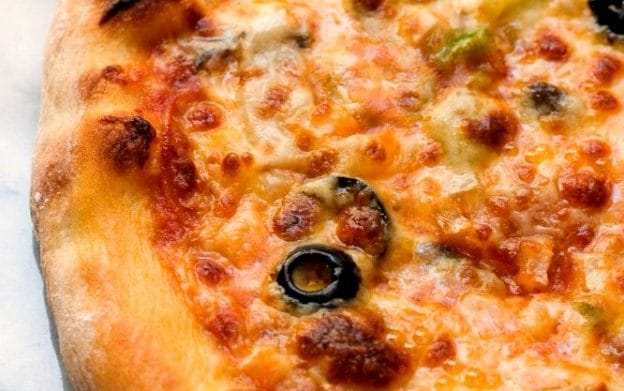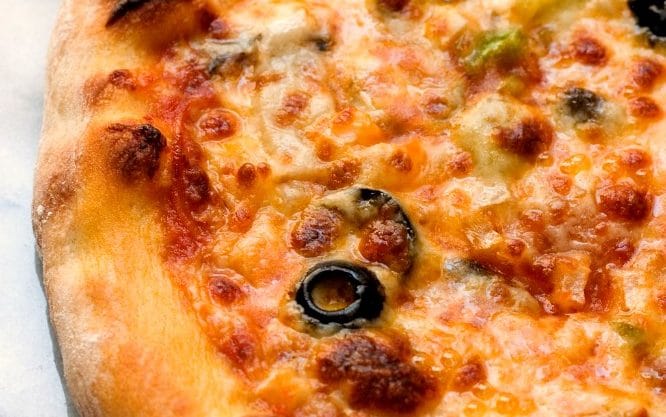INTRODUCTION: It’s something in the water… or if nothing else that is the thing that they’ll have you accept. One of the most established hypotheses about New York City pizza is that the city’s faucet water is in charge of its predominant taste. Numerous Americans won’t not realize that here in the Big Apple, we’re nearly as glad for our water as we are of our pizza, and that the city has been adding fluoride to the water for over 50 years. Be that as it may, do fluoride and the other disintegrated solids and minerals truly have any kind of effect when pizza batter is being burnt at such high temperatures?
Related articles about New York Styled Pizza
Panda Express Feedback @www.pandaexpress.com/feedback
www.Feedback4OldNavy.com – Feedback 4 Old Navy Survey to Win Reward Coupon
www.BwwListens.com – Bwwlistens Survey to Win a Coupon Code
HYPOTHESIS: Numerous keep on believing this myth, with a few pizzerias going so far as to import batter made in New York for utilize somewhere else, similar to Lamonica’s in Los Angeles. It’s a decent, clean hypothesis that doesn’t exactly do equity to the talented pizza culinary experts of New York. What’s more, it’s effectively exposed the minute you understand that Domino’s Brooklyn-style pizza is likely a superior estimation of New York pizza than Lamonica’s, regardless of where they may get their mixture from.
Things being what they are there is no single authoritative answer concerning what precisely makes New York pizza so uncommon. It is a considerable measure like the exploration of rest or dark gaps or quantum mechanics — something that numerous have hypothesized about yet at the same time isn’t completely caught on.
One rising hypothesis is that the primary purpose behind New York City’s astounding pies isn’t the water, nor the fixings, but instead the stoves. New York pizza utilizes deck stoves that cook at greatly high temperatures and are frequently decades old. The thought is that like a decent cast-press skillet, the broiler assimilates the decades of cheddar and sauce vapor into its dividers and afterward grants it onto new pizzas that are cooked. This would clarify why Joe’s on Carmine Street in the city makes such a wonderful cut, yet its Santa Monica station — probably supplied with a more current deck stove — doesn’t exactly taste the same. This hypothesis likewise would appear to clarify why the huge number of $1 pizza joints, with their glossy new broilers, regularly create an extremely impartial, insipid cut.
EXPERT’S OPINION
Gavin Sacks, professor at Cornell University’s bureau of sustenance science, doesn’t support this hypothesis. “Will probably get remaining taste when you’re managing pollution,” he says. “In the event that you utilize a cleanser and don’t tidy it up the distance, the pizza you cook will presumably taste somewhat like the cleanser you utilized.” It is impossible, however hypothetically conceivable, he says, that a broiler could amass enhance mixes over many years of utilization. This thinking, nonetheless, likewise accompanies a stipulation: “In case you’re cooking pizza after pizza, the flavors are similar to the point that you wouldn’t have the capacity to recognize a distinction between another stove and an old broiler.” Sacks additionally trusts that any granted taste would to a great extent vanish after a decent cleaning. Also, we should all expectation that pizza puts in the city clean their broilers.
Mathieu Palombino, organizer of New York’s Neapolitan-style pizza eatery Motorino, sees the stove as a device that by need ought not change after some time. When he opened Motorino, Palombino purchased his broiler straightforwardly from one of the two noteworthy pizza-stove producers in Naples, definitely on the grounds that their broilers can convey steady, customary Neapolitan pizza over numerous years. Truth be told, these stoves have characterized the essence of Neapolitan pizza, and any change may be altogether unwelcome. Palombino’s hypotheses about New York pizza are relatively idyllic. “Possibly the tale of New York pizza is that it should have been made so rapidly that the batter is manipulated for less time, and this turned out to be a piece of the formula. Perhaps they were busy to the point that they expected to stick the batter with flour and it wound up less blended.” He additionally trusts that little, regularly neglected parts of a pizza joint may have a bigger influence in the cooking procedure than we may speculate. “It may be that the eatery gets to the correct temperature since it is the ideal size, or in light of the fact that the entryway is set in a specific area,” he muses.
To be sure, hypotheses like this may clarify why one of Palombino’s most loved cuts in the city, Patsy’s on 118th Street, has been around in a similar area for over 80 years, producing pie after pie of basic, clear flawlessness. Palombino compares it to the account of a ground sirloin sandwich bun culinary expert who, by need, stuffed his stove with loads of buns and later understood that doing as such included significantly more water vapor to the broiler, which altogether added to the buns’ mark taste — an outcome that could never have been conceivable had he cooked less buns at once. The style of New York pizza could very well be the place the enchantment happens.
DISCUSSION ON HYPOTHSES
Different hypotheses are significantly more rudimentary. Marc Bauer, ace gourmet specialist at the International Culinary Center, trusts that a far less difficult, far less theoretical power is behind great pizza: revise procedure and amazing fixings. The commitment of the yeast in the pizzeria’s air, the liquor created in the maturation procedure of the mixture, and the method of extending batter as opposed to moving it protects the structure of the rises in the batter and may in certainty be the establishment of the New York outside layer we cherish so beyond a reasonable doubt. “On the off chance that you utilize great Italian cheddar, and you focus on what sort of tomatoes you utilize and to what extent you cook it, it will all have a major effect in taste,” he includes. “Multifaceted nature originates from such a great amount: from the caramelization procedure, from the way it is put into the broiler.” Some places that are surged, Bauer recommends, may very well cook pounded tomatoes with a little garlic for thirty minutes, while others may season their sauces with more noteworthy consideration and cook them for a more drawn out time, yielding a wealthier, more refined item.
“A major slip-up I see a few spots make,” he says, “is utilizing a filthy stove. You see consumed bits at the base of the pizza, which is terrible.”
The juncture of components like the yeast noticeable all around and the way the mixture is blended may never have a sufficient effect in taste to eclipse quality fixings, be that as it may. Bobby Hellen, official culinary specialist at GG’s in New York, trusts that great pizza is to a great extent the result of good fixings. “What is important the most to me is the nature of flour individuals utilize,” Hellen says. He sources his from a plant in upstate New York and aversions the inescapable utilization of blanched flour.
In fact, New York pizza must have crunch and chewiness in all the correct places and ought to never be excessively raw. No contention can be made for minerals in New York’s water or the age of the stoves, for instance, when looked with such an incredibly evident difference between a rich, complex cut from Joe’s or Sal and Carmine’s, and a $1 cut from a place only a couple of squares away. “There’s a place close where I work that offers dollar cuts with shitty flour, shitty sauce, a ton of provolone and only a little mozzarella,” Hellen says, depicting the inexorably mainstream, oil filled foundations that line the avenues of the city.
Being that a dollar-cut place can work yards from a storied opening in-the-divider pizza joint — which apparently utilize water from similar pipes and offer a similar atmosphere — it is difficult to give any assurance to a large number of the heap legendary variables to which individuals so frequently characteristic the accomplishment of New York pizzas. Hellen calls this impact “immersion.” “You can discover a great deal of shitty pizza in New York,” he says, and surely he is correct. The way that we have pizza joints on relatively every corner just might be the fundamental reason we have any great ones whatsoever. With more than 100 years of pizza custom, unavoidably a few culinary experts will create a surprising cut. The sheer number of pizza places, alongside consolidated a long time of information and practice, prompts a lopsided volume of value pizza, skewing the presence of a whole industry and concealing the system of mediocre, anonymous pizza joints behind spots like Prince Street and Best Pizza.
CONCLUSION
Quality can persevere. Patsy’s was never the main pizza put in that little corner of Harlem, where today, it stands for the most part alone. The awful pizza of old New York has been lost to time. What stays from 80 years prior is the best — that which had the expertise to survive and to hack it out on the planet’s most unforgiving pizza atmosphere. It makes sense that the records of pizza history in 80 years time will bear no hint of spots like 2 Bros. The tale of pizza in New York, some may state, resembles the historical backdrop of writing: The world little notes the men of Elizabethan England who composed plays nearby Shakespeare.
Surveys to win rewards
Panda Express Survey – Win a Free Panda Express Coupon



